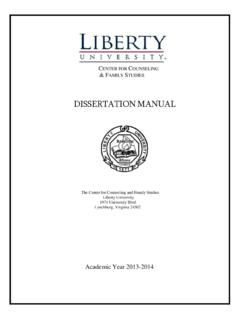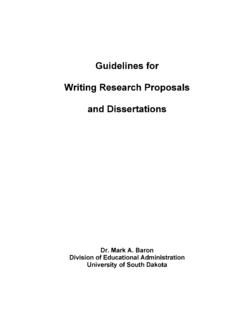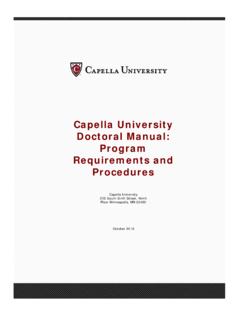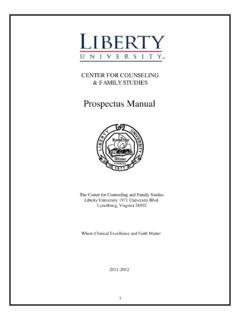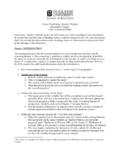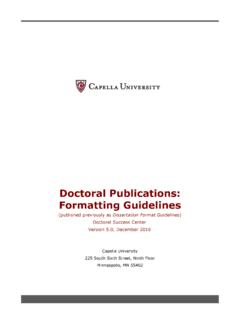Transcription of Practicum Manual 20161027 - New - Antioch School
1 Practicum Manual March 2016. Antioch School . OF CHURCH PLANTING AND. LEADERSHIP DEVELOPMENT. Practicum Manual Revised March 2016. What is a Practicum ? What is the Academic Legitimacy of Learning by Doing? . How Do You Select Ministry Practicum ? Examples of Ministry Practicum How Does It Work? Teaching Practicum 1. What is a Practicum ? A Practicum is an educational opportunity based in learning by doing.. A Practicum is an educational opportunity based in learning by doing. It allows you to learn through participation in substantial ministry responsibilities. A Practicum takes advantage of the unique match of the learning environment ( a church) and the learning objectives ( ministry training). Since all Antioch School students are based in ministry situations, there is ample opportunity for them to learn by doing. In fact, it is often a natural dimension of their participation in church because they view ministry at the core of what it means to be part of a church.
2 A Practicum is based on a learning contract with a supervisor who monitors your service, but also helps you learn from it. A Practicum is not credit for experience.. A Practicum is not credit for experience. It is not simply acknowledgment that lots of previous experience necessarily means that you deserve credit. Many of us haven't learned very much from most of our past experiences. A Practicum is not credit for current experience, as if mere activity is the same as learning. It is not credit for time on task.. Rather, credit is given for experience where there is evidence of three things: 1. Preparation. Is there a plan for making the experience an effective learning opportunity? 2. Experience. Is there a report about what actually took place in the experience? 3. Reflection. Is there assessment of what was accomplished and learned through the experience (including what was learned about what you still need to learn)? Each Antioch School program includes Practicum requirements in order to take advantage of the church-based situation of students.
3 We think that experiential learning turbocharges education, but situated learning (where the context and the content match) turbocharges experiential learning! A. Practicum is a tangible way for students to maximize the benefit that can be derived from their church-based condition. 2. What is the Academic Legitimacy of Learning by Doing? . Many people associate academic integrity with traditional courses in classrooms on a campus. Increasingly, academic legitimacy is being recognized as the evidence of learning, not just teaching.. Increasingly, academic legitimacy is being recognized as the evidence of learning, not just teaching.. A foundation of the academic legitimacy of educational Practicum is found in the work of a leading scholar named David Kolb. His book, Experiential Learning: Experience as the Source of Learning and Development (Englewood Cliffs, NJ: Prentice-Hall, 1984) is a classic in educational research. Kolb's model is not just about experiential learning, but the central role that 42 Structural Foundations of the Learning Process experience plays in the learning Concrete process (p.)
4 20). The essence of the chart Experience below shows the ongoing progression of the cycle of Concrete Experience, Grasping via APPREHENSION. Reflective Observation, Abstract Accomodative Divergent Conceptualization, and Active Knowledge Knowledge Experimentation (with the various forms of knowledge created and the intellectual Active Transformation Transformation Reflective Experimentation via EXTENSION via INTENTION Observation processes through which knowledge is created). Convergent Knowledge Assimilative Knowledge Grasping via COMPREHENSION. Kolb is quite well-known for his work on experiential learning, but less well-known Abstract for his work on comprehensive human Conceptulization development. The chart below shows how Figure Structural Dimensions Underlying the Process of experiential learning relates to the Experiential Learning and the Resulting Basic Knowledge Forms maturing process as one engages more completely and effectively in one's world.
5 3. Kolb's work focuses on the The Experiential Learning Theory of Development 141. powerful developmental role of experiential learning. Others have Self as built on Kolb's foundation and process . Integration transacting focused on the relation of with the world experiential learning with contexts. The most noteworthy contributors ity are Jean Lave and Etienne Wenger, Increasing complexity and relativism via the ity mplexity exity plex plex integration of dialectic adaptive modes Self as mpl l com om particularly through their book content . co Symbolic co ral c Specialization transacting ptua Affeective avio Situated Learning: Legitimate with the e Perc world Beh Peripheral Participation (New York: Cambridge, 1991). CE. Lave and Wenger have Self as undifferentiated . popularized the term situated immersed in Acquisition Accomodation the world Divergence learning which essentially means that educators pay attention to the AE RO. context as well as the content to Convergence make sure that they match in a Assimilation manner to optimize development.
6 A few technical terms help us to AC. understand this concept. Figure The Experiential Learning Theory of Growth and Development Legitimate peripheral participation refers to the substantial, yet not fully integrated position of a learner, particularly an apprentice. The learner is recognized to have a legitimate place in the situation, even if it is still somewhere on the periphery (or away from the very core of the context). Zone of proximal development refers to the attempt by mentors and students to find the places were optimal development can take place. It often means getting more closely involved than one might think is appropriate, but not too closely involved that it is completely overwhelming. Rather, it is finding the right match between challenge and comfort. The academic legitimacy of Practicum is made particularly clear in the work edited by Barbara Jacoby, Service-Learning in Higher Education: Concepts and Practices, (San Francisco: Jossey-Bass, 1996).
7 Service Learning is the term for learning that is connected to service. Several years ago, the American Association of Higher Education commissioned a series of nearly 20 books to be written on service learning in the various disciplines of traditional higher education. Two crucial factors stand out in terms of the academic legitimacy of service learning. First, the learning must be planned with academic objectives in mind. Usually there is a learning contract in 4. place that defines the objectives, the experience, supervision, and the assessment process. Second, there is serious reflection on the experience. It is the looking back on what was accomplished in terms of learning that transforms experience into learning that endures (and takes you toward further learning that builds on the experience). A thorough literature review of experiential learning, situated learning, and service learning was done as part of the dissertation research by Stephen Kemp, Academic Dean of the Antioch School .
8 It is called Experiential Learning and the Role of Primary Social Relationships as Context for Situated Learning in Distance Education Courses of Evangelical Theological Education Institutions (Loyola University/Chicago, in Higher Education, 2007). This research concludes that although Christian distance education programs allow students to study where they are, the programs focus on the academic learning community (students and faculty in institutional contexts) and don't take advantage of the incredible potential for students to benefit from their God-given learning communities (family, church, neighborhood, workplace)..the programs focus on the academic learning community (students and faculty in institutional contexts) and don't take advantage of the incredible potential for students to benefit from their God-given learning communities (family, church, neighborhood, workplace). In Kemp's Learning Communities in Distance Education, he makes the case for the biblical priority of primary social relationships as contexts for learning.
9 He also gives practical examples of how families, churches, and neighborhoods can be easily engaged to help accomplish traditional academic objectives in powerful and enduring ways. 5. How Do You Select Ministry Practicum ? Ministry Practicum experiences are closely connected with a student's rk Cont Netwo ex t relationship with a local mentor. The choice of experiences is driven by h rc u three perspectives: Ch /. Church 1. The perspective of the mentor (and/or Certified Leader). Although some students may want to start with what they want to do or learn, it is advisable to start with what their mentor wants them to do or learn. In fact, one of the realities of ministry is that we often must Student Mentor do what needs to be done, not necessarily what we prefer to do. A. mentor (and/or Certified Leader) should be paying close attention to the ministry needs of the church or other ministry context. Perhaps even more important than the lessons learned from the actual ministry experience is the deep recognition of the sacrifice that is often necessary in ministry.
10 However, there is also ample opportunity to learn from even the least desirable ministry experiences. The mentor may also have special perspective to know what the student really needs. While the mentor should consult with the student, it is often the wiser mentor who sees the type of experience that the student needs in order to develop in particular ways or for particular purposes. 2. The perspective of the student. A good mentor will be alert to what students feel that they want or need. In fact, often some ministry Practicum experiences should be catered to the perceived needs or desires of the students themselves. Often, this will result in a heightened level of commitment and engagement in the experience. However, the final decision regarding ministry Practicum should stay with the mentor who is supervising and helping the student learn from the experience (and develop into what is needed for the church or ministry context). 3. The perspective of the church (and/or church network).

